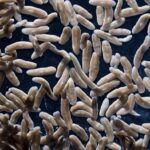Scientists based in New York have developed a new technique for removing impurities from mRNA therapies. The researchers, from the Rensselaer Polytechnic Institute (RPI), found that their regenerated cellulose (RC) membrane outperformed commercial chromatography columns in removing impurities.
The membrane was faster and more efficient, helping to speed up and hopefully reduce the costs of future mRNA production.
“We believe we’ve succeeded in every way—the productivity, the speed of purification, and the efficiency are all better,” explains Georges Belfort, PhD, Endowed Chair Russell Sage Professor of Chemical and Biological Engineering at RPI.
According to Belfort, the mRNA molecules used for vaccines are nine times larger than typical monoclonal antibodies (mAbs), meaning they move slowly, plug the pores, and only a tiny fraction can pass into or through the porous beads used in some chromatography systems. This makes them relatively inefficient.
As an alternative to using beads or resins, he says the team, with the help of associate professor Pankaj Karande, PhD, instead developed a porous RC membrane with peptide ligands (or selective hooks) attached to it. As the mRNA passes through the membrane, the peptides selectively bind to a particular section of the molecule.
By carefully tweaking the charge on the membrane surface, the desired mRNA (or alternately, the undesired immunogenic impurities) can be unbound from the surface for future use, he says.
“We needed to find a sweet spot for how positive the membrane seems to be. If it’s too positive, you can’t get the molecules off the surface,” he explains. “Once you’ve got them off the surface, you can change the pH to capture the molecule you want—it’s a unique process and we have applied for a patent on it.”
The team is now hoping to attract industry collaborators to help them perfect and commercialize their process.
Belfort worked with multiple collaborators formerly at RPI, including Claudia (Menyang) Hu, PhD, and students Riddhi Banik, Thomas Neuman, and Surya Karla.
He spoke about the research at the 17th Annual Bioprocessing Summit, which was held earlier this year.

